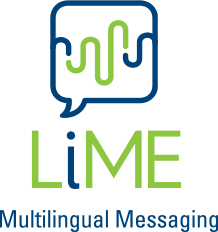Yes, it is possible.
Picture yourself trying to understand a foreign language or struggling to make sense of a document written in a language you can’t comprehend. It can be frustrating and make you feel alone – creating problems that affect every part of your life. People with non-English speaking backgrounds or NESB face these issues daily, dealing with problems related to reading and understanding language that make it hard for them to communicate and connect with others.
In 2021, the Australian Bureau of Statistics found that 22.3% of folks in Australia spoke a language at home that wasn’t English. But out of these people, only 68% said they were good or very good at English. That means more than 30% of people in Australia who come from non-English speaking backgrounds might struggle with reading and writing in English.
As we look into why being able to read and write is so important for people in Australia who don’t speak English, we want to shine a light on the problems they face and talk about some solutions that can help bridge this gap.
At All Graduates, we know how much not being able to read and write in English can affect people, and we’re committed to finding ways to help them. We’ll also talk about why it’s important to communicate well across different cultures and introduce some new services and tools, like interpreter services, translation engines, and messaging systems in multiple languages.
Come with us on this journey as we explore the complex world of breaking down the barriers of literacy and language for people in Australia who are NESB speakers. Together, we can make a difference and give people from different backgrounds the power to succeed in today’s global world.
Poor Literacy Affects NESB Speakers Too
Language and literacy barriers pose significant challenges for non-English speakers, hindering their ability to communicate effectively and navigate various aspects of daily life. While much attention has been given to improving literacy rates among native English speakers, it is essential to address the needs of non-English speaking people with limited literacy skills. By understanding the impact of poor literacy on this specific group, we can develop strategies and solutions to help overcome these barriers.
The consequences of poor literacy for NESB speakers are extensive. It diminishes their ability to engage actively in society, hindering their integration and participation. Lack of access to critical information, such as legal documents or safety guidelines, leaves them vulnerable to exploitation and injustices. Additionally, miscommunication due to poor literacy can result in misunderstandings, strained relationships, and missed opportunities.
Addressing below-par literacy among non-English speakers is a critical issue that requires collective action. By investing in effective language support services and resources, we can empower non-English speakers to overcome these barriers and achieve their full potential. Providing access to accurate and up-to-date information, language assistance, and culturally appropriate communication strategies are crucial steps in breaking down these barriers and improving outcomes for this population.
“Audio is a great equaliser in terms of communicating messages where literacy is an issue.”
Understanding their Daily Challenges
NESB speakers with limited literacy skills face unique challenges that significantly impact their communication and daily lives. These challenges pose barriers to understanding and can hinder their ability to access essential services and information. Let’s explore these specific challenges and their implications.
Limited Language Proficiency
One of the primary challenges for people with a non-English speaking background and who have limited literacy skills is their limited language proficiency. They may struggle to comprehend and express themselves effectively in the language spoken in their new environment. This limited language proficiency can make it difficult for them to communicate their needs, understand important instructions, and navigate various daily situations.
Difficulty in Understanding Written Information
Poor literacy skills pose a notable hurdle NESB speakers as they struggle to read and understand written information. This can make it challenging for them to comprehend important documents, such as government forms, medical instructions, or educational materials. Without adequate support, they may miss out on critical information and opportunities.
Barriers to Accessing Services
Limited learning skills can create significant barriers when non-English speaking people try to access various services. This can result in difficulties accessing healthcare, education, legal assistance, and other essential services, further exacerbating inequalities and hindering integration.
Social Isolation and Limited Opportunities
The language and literacy blockades faced by non-English speakers can contribute to social isolation and limited opportunities. They may struggle to connect with their communities, find employment, or participate fully in society. Minimal literacy skills can also affect their confidence and self-esteem, making it more challenging to engage in social activities and build meaningful relationships.
Potential for Miscommunication and Misunderstanding
When non-English speakers with below-par literacy skills try to communicate, there is a higher potential for miscommunication and misunderstanding. This can have serious consequences in various settings, such as healthcare, legal proceedings, or educational environments. Miscommunication can lead to errors, confusion, and even harm if critical information is not accurately conveyed.
The implications of these challenges are far-reaching, affecting their overall well-being and opportunities for social and economic advancement.
To address these challenges effectively, it is crucial to develop comprehensive strategies that prioritize the needs of non-English speakers with limited literacy skills. By providing targeted support and resources, we can empower these individuals to overcome language and literacy barriers and actively participate in society.
Solution #1 – Google Translate: AI and Machine Learning
“Hey Google, how do you say ‘pass the wasabi’ in Japanese?”
Google Translate has revolutionized language translation with its advanced AI and machine learning capabilities. It provides an efficient and accessible tool for overcoming language barriers and supporting non-English speakers with limited literacy skills. With a vast database of languages and continuous improvements, Google Translate has become an indispensable resource in bridging communication gaps.
Accuracy and Reliability
One of the key advantages of Google Translate is its accuracy in translating text from one language to another. With the power of AI and machine learning, Google constantly refines its translation algorithms, leading to highly accurate and reliable results. However, it is important to note that while Google Translate has made significant progress, it may not always capture the intricacies and nuances of a particular language, so some minor errors or inconsistencies may occur.
Multilingual Accessibility
Google Translate supports a wide range of languages, making it accessible to speakers of different mother tongues. Whether it’s translating English to Spanish, French to Chinese, or any other language pair, Google Translate provides a quick and convenient solution for non-English speakers to understand and communicate in their desired language. This accessibility is particularly valuable for individuals who have limited literacy skills in their second language.
Text and Speech Translation
Google Translate offers both text and speech translation capabilities. Users can enter words, phrases, or sentences for instant translation. Additionally, the app allows users to speak into their device’s microphone, which then translates their spoken words into the target language. This feature is especially advantageous for non-English speakers who struggle with reading or writing in their second language.
Offline Functionality
Another useful feature of Google Translate is its offline functionality. Users can download language packs in advance and use the app without an internet connection. This is particularly beneficial for individuals who may not have access to stable or affordable internet services.
With offline translation, non-English speakers can utilize Google Translate anytime, anywhere, even without an internet connection.
Limitations and Considerations
While Google Translate has numerous benefits, it does come with some limitations. As mentioned earlier, it may not capture every linguistic nuance accurately, and certain phrases, idioms, or cultural references may not translate well. It is essential to exercise caution and cross-reference translations with native speakers or reliable sources.
In addition, Google Translate should not be solely relied upon for critical and sensitive translations, such as legal or medical documents. For these situations, it is advisable to seek professional translation services to ensure accurate and precise communication.
Solution #2 – Interpreters for Businesses
The impact of qualified interpreters enabling accurate communication is invaluable.
In today’s multicultural society, businesses interact with a diverse range of customers, including NESB speakers. However, language barriers can hinder effective communication and impact customer experience.
According to a survey conducted by Common Sense Advisory, 76% of consumers are more likely to make a purchase if the product information is available in their native language. This statistic highlights the importance of overcoming language barriers in business interactions to provide a positive customer experience and drive sales.
To address this challenge, businesses can rely on professional interpreters to facilitate communication with non-English speaking customers. By hiring interpreters who are fluent in the relevant languages, businesses can ensure accurate and effective communication, leading to improved customer satisfaction and loyalty.
Interpreters play a crucial role in various business settings, such as retail stores, customer service centers, and hospitality establishments. They can assist with tasks such as explaining product information, answering customer inquiries, and facilitating negotiations. With their language skills and cultural knowledge, interpreters help create a welcoming and inclusive environment where all customers feel valued and understood.
Furthermore, interpreters can also help businesses expand their reach into new markets. By breaking down language barriers, businesses can tap into the purchasing power of diverse communities and reach a wider customer base. This can lead to increased sales, revenue growth, and opportunities for long-term business expansion.
Businesses should prioritize professional interpreters over automated systems or untrained staff for accurate and culturally sensitive communication. Professional interpreters possess essential language fluency and cultural understanding, ensuring effective bridging of language gaps.
This is where qualified interpreters play a vital role in enabling accurate communication and bridging the gap between businesses and non-English speakers.
The Benefits of Qualified Interpreters
- Accurate Communication: Interpreters are trained professionals who possess excellent command over multiple languages, including business-specific jargon. They ensure precise and accurate interpretation, avoiding any misinterpretations or misunderstandings that may arise from limited language proficiency. This leads to clearer communication, fostering better understanding between businesses and non-English speakers.
- Cultural Understanding: Interpreters not only bridge the language gap but also help businesses navigate cultural nuances. They are familiar with the cultural norms, values, and customs of both NESB speakers and the business environment. This understanding allows interpreters to facilitate smoother interactions and build rapport by ensuring cultural sensitivity is maintained throughout the conversation.
- Enhancing Customer Experience: By providing interpretation services, businesses demonstrate a commitment to inclusivity and customer-centricity. Interpreters help NESB speakers feel valued and understood, leading to a positive customer experience. This, in turn, can boost customer satisfaction, loyalty, and advocacy.
- Overcoming Legal and Ethical Challenges: In sectors that require legal compliance or involve sensitive information, qualified interpreters play a crucial role in upholding confidentiality and professionalism. They adhere to strict ethics and confidentiality guidelines, ensuring that the information shared remains secure and private.
- Efficiency and Accuracy: Engaging professional interpreters saves time and resources by eliminating the need for ad-hoc attempts at communication. With their expertise, interpreters ensure an efficient exchange of information, enabling businesses to focus on their core operations instead of struggling with language barriers.
- Building Trust and Credibility: Excellent customer service is built upon trust and credibility. By providing professional interpreters, businesses establish themselves as reliable partners who prioritize effective communication and customer satisfaction. This can lead to positive word-of-mouth recommendations and enhance the brand’s reputation in diverse communities.
Businesses investing in professional interpretation services show commitment to effective communication, customer-centricity, and trust-building in a diverse marketplace.
At All Graduates, we understand the importance of accurate and culturally sensitive communication. Through our interpreter services, we provide businesses with the necessary tools to overcome language barriers and connect effectively with non-English speakers. Let us help you bridge the gap and create meaningful interactions in a multicultural world.
Solution #3 – Audio-Messaging
Audio messaging offers a powerful solution for engaging with non-English speakers who face literacy barriers. By utilizing this innovative communication tool, businesses and organizations can create meaningful dialogues and overcome language and literacy challenges.
Enhancing Engagement and Accessibility
Audio messaging bridges language and literacy gaps, ensuring accessibility for non-English speakers with limited reading skills. Businesses benefit by delivering messages in audio formats.
Also, Audio messages provide a convenient and easily understandable delivery channel. They allow individuals to listen and comprehend information without reading or interpreting written text.
This accessibility helps to engage a broader audience, including those at the very lowest end of the literacy scale.
Creating Clear and Meaningful Interactions Help People with NESB
In situations where written text may be confusing or difficult to understand, audio messaging offers a clear and engaging alternative. By using simple phrasing and clear pronunciation, audio messages can effectively convey important information, instructions, or announcements to non-English speakers.
Moreover, this allows for real-time interaction and feedback. It enables individuals to ask questions or seek clarification in their native language, promoting a deeper understanding of the communicated content. This level of engagement can significantly enhance communication outcomes, ensuring that NESB speakers feel valued and included.
Overcoming Language and Literacy Barriers
Audio messaging is particularly valuable in professional environments, where complex concepts or technical terms may pose challenges for non-English speakers with limited literacy skills. By providing clear explanations and descriptions through audio messages, professionals can effectively bridge the language and literacy gap.
Additionally, audio messaging can be utilized in various settings, ranging from customer service helplines to educational institutions. It offers a convenient communication channel that can be easily accessed and understood by individuals with different language backgrounds and literacy levels.
The Power of Audio Messaging for NESB Speakers
In summary, audio messaging presents an effective tool for engaging with non-English speakers facing literacy barriers.
By delivering messages in an audio format, businesses and organizations can enhance accessibility, create clear and meaningful interactions, and overcome language and literacy challenges. This innovative solution allows for effective communication while fostering inclusivity and understanding among diverse audiences.
Breaking Through Barriers
Serving clients with low literacy levels is crucial for businesses to ensure effective communication and meaningful engagement.
Here are some tips on how businesses can best connect with and cater to this audience:
- Simplify Language and Avoid Jargon
First off, when communicating with non-English speakers facing literacy barriers, it’s essential to use clear and straightforward language. Avoid complex terminology, industry jargon, and acronyms that may confuse or intimidate individuals with limited literacy skills.
Instead, choose words and phrases that are easily understandable and relatable.
- Utilise Visual Content
Next, visual aids can be powerful tools for conveying information to individuals with limited literacy. Incorporate images, diagrams, and infographics into your communication materials to enhance comprehension.
Not to mention that visual content can help bridge the gap between language barriers and literacy challenges, enabling NESB speakers to grasp concepts more easily.
- Provide Language Support
Offering language support services can greatly assist non-English speaking background speakers with limited literacy skills. This can include providing translated materials, offering multilingual helplines, or utilizing translation software for real-time communication.
By addressing language barriers directly, businesses can ensure that their services and information are accessible to a broader audience.
- Tailor Communication Channels
Consider the preferred communication channels of your low-literacy clients. While some may feel more comfortable with face-to-face interactions, others might prefer telephone or text-based communication. Understanding and accommodating these preferences can help foster better engagement and improve the overall client experience.
- Train Staff on Cultural Sensitivity
Educate your staff on cultural sensitivity and diversity awareness to ensure respectful and inclusive communication. Understanding cultural nuances can help avoid misunderstandings and establish trust with non-English speaking clients. You can also encourage empathy and respect when interacting with individuals from diverse backgrounds.
- Seek Professional Language Support
Lastly, if your business regularly deals with NESB clients with limited literacy, investing in professional language support, such as interpreters or translators, can be invaluable. Qualified professionals can facilitate accurate communication, ensuring that messages are relayed clearly and effectively.
Remember, breaking through language and literacy barriers requires a proactive and empathetic approach. Implementing these tips enables businesses to enhance communication, connect with non-English speaking clients effectively, and create a positive, inclusive customer experience.
You can connect to your audience in meaningful ways, regardless of literacy proficiency.
In conclusion, addressing poor literacy among NESB speakers is crucial for creating inclusive and effective communication. Language and literacy barriers greatly impact the lives of individuals with limited English proficiency, hindering their ability to access information, participate in society, and fulfill their potential.
However, effective strategies and resources are available to overcome these challenges and promote meaningful engagement.
Throughout this article, we have explored various solutions to address language and literacy barriers. To aid non-English speakers with limited literacy skills, effective support can be provided through the use of AI, machine learning (e.g., Google Translate), and qualified interpreters.
Additionally, Audio messaging is now a powerful way to connect and interact with this audience, fostering meaningful conversations and facilitating clear engagement.
Thus, language and literacy barriers should be seen as both a responsibility and an opportunity for businesses and organizations to foster inclusivity. All Graduates’ strategies and services can help NESB speakers overcome challenges, participate in society, access services, and achieve their goals.
Together, we can break through language and literacy barriers and build a more inclusive and equal society for all.
References
- Australian Bureau of Statistics, Census of Population and Housing, Census Dictionary, Language Used At Home, 2021
- Survey of 8,709 Consumers in 29 Countries Finds that 76% Prefer Purchasing Products with Information in Their Own Language by CSA Research, 2020







